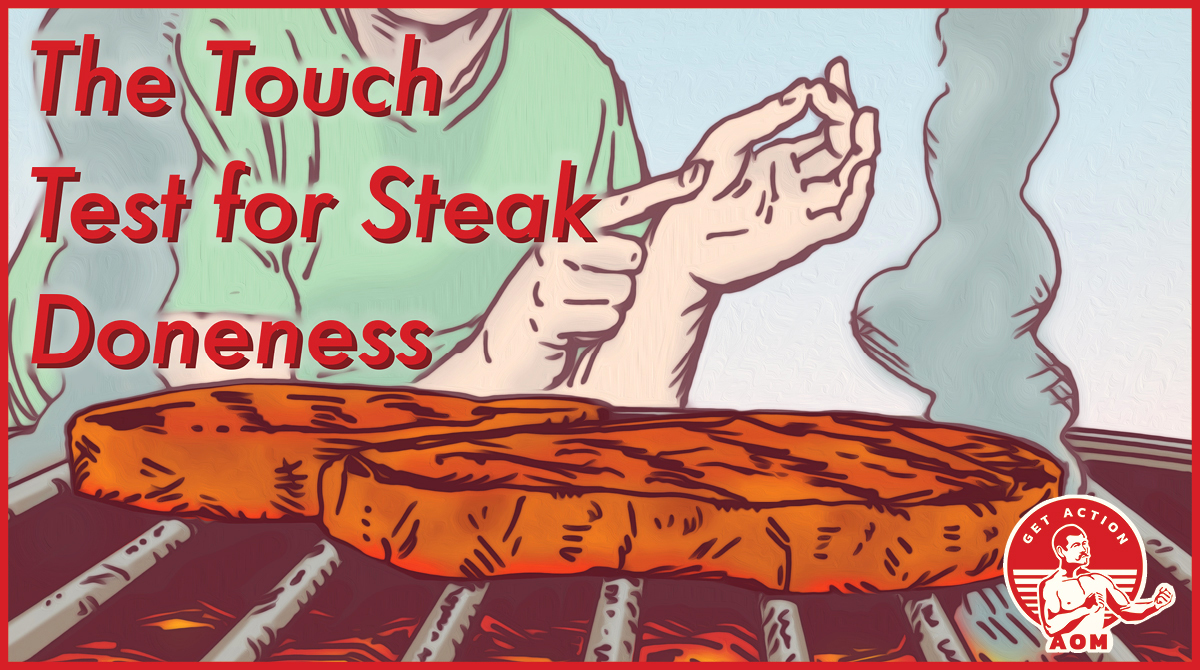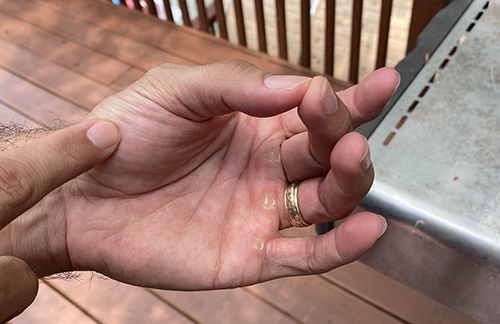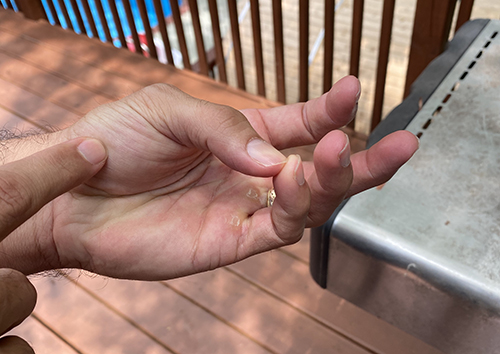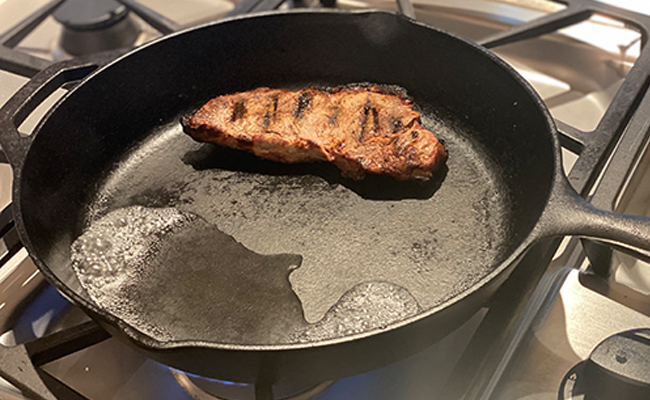
Tis the season for flame-cooked victuals, and to ensure that your backyard grub turns out neither over- or undercooked, but just right, every grill master should have a digital meat thermometer. They’re cheap and quickly let you know the exact temperature of your food.
But what if you’re cooking up some delicious cuts of beef and you don’t have a digital thermometer on hand for some reason? Maybe you lost it or the battery crapped out on you at the last minute. How can you ensure that your buddy who requested a medium-rare steak doesn’t get one that’s medium-well without cutting the steak open and letting all that wonderful juice run out?
Good news: a back-up doneness-tester is right, well, at hand.
How to Use the Touch Test to Determine a Steak’s Doneness
As your steak cooks on the grill, it gets more firm as it progresses in doneness from rare to well-done. The firmer the steak is to the touch, the more cooked it is.
But how do you know what firmness level corresponds to rare, medium-rare, medium, medium-well, and well-done?
By touching the palm of your hand.

Open the palm of your hand and relax it. With the index finger of your other hand, touch the fleshy part between your thumb and the base of your palm. This is about what a raw steak feels like when you touch it. Unless you’re on some sort of weird raw meat diet or a lion, your steak’s not ready to eat if it feels like that.
As the raw steak cooks, the meat will begin to firm up, and each level of subsequent firmness in the meat will correspond to how firm the fleshy part under your thumb feels as you sequentially touch your thumb to the fingers of your hand:
Rare Steak Touch

Press the index finger and thumb of your hand together and touch the fleshy area under your thumb with the index finger of your other hand. It will now feel a bit firmer than it originally did. This is about what a rare steak feels like to the touch.
Medium-Rare Touch

Press your middle finger and thumb together. Touch the fleshy area beneath your thumb. This what most steaks will feel like when they’re medium-rare.
Medium to Medium-Well Touch

Press your ring finger and thumb together and the fleshy area on your palm will feel like a medium-well steak.
Well-Done Touch

Press your pinky finger and thumb together and the fleshy area will have the firmness of a well-done steak.
Is the Finger Touch Test Actually Accurate?
I remember that when I first heard about this grilling hack, I was dubious. How is it that the varying firmness of our palms corresponds so nicely to a steak’s doneness? Could this method really be accurate?
Consumer Reports did an investigation into this question a few years ago. After using the touch test to determine how done a cut of meat was, they used a meat thermometer to verify the results. The verdict?
The touch test was surprisingly accurate.
The only discrepancy they found was that the touch test typically resulted in slightly undercooked meat. For example, a steak that was medium-rare according to the touch test was actually a few degrees below medium-rare.
Consumer Reports concluded that the touch test was useful for ensuring that you didn’t OVERCOOK meat, but not as great for preventing UNDERCOOKED meat. If you have a diner who’s a stickler about having a well-done steak, the touch test might result in serving them a steak that’s a bit pinker than desired. Of course, you can make allowance for this factor, so that when a steak has reached a certain level of doneness according to your palm, you give it a bit longer to cook before taking it off the heat.
Happy grilling!







